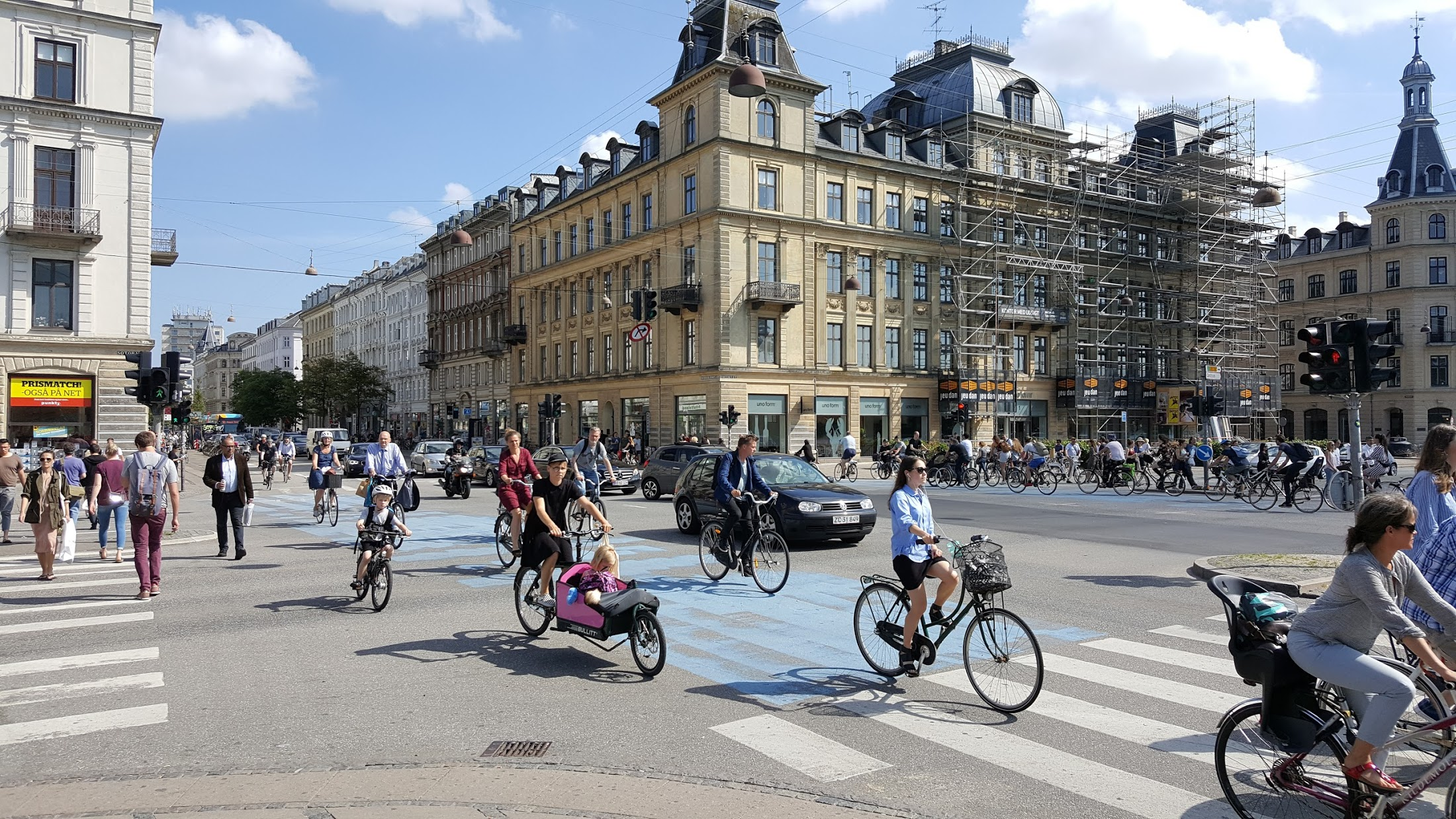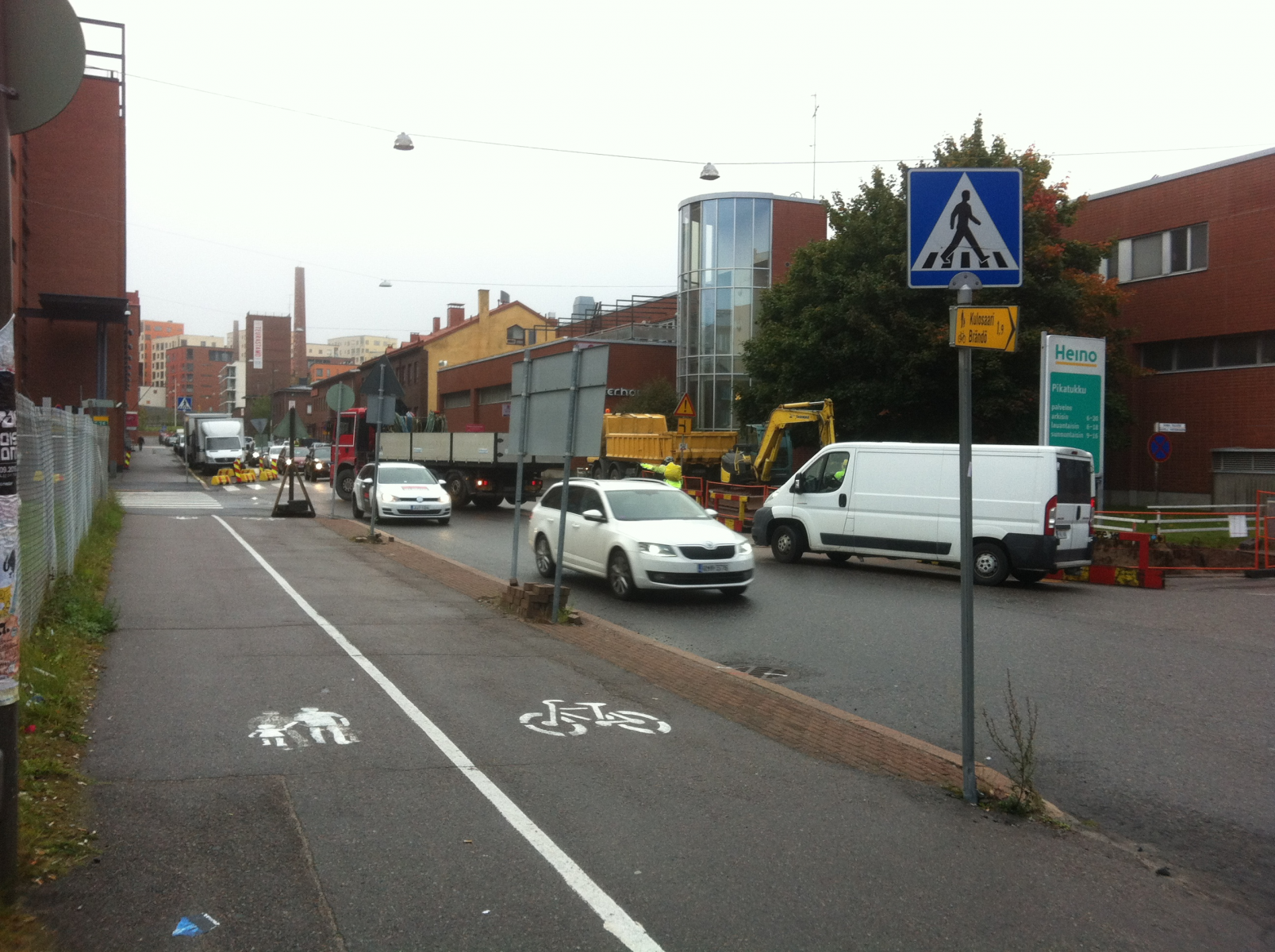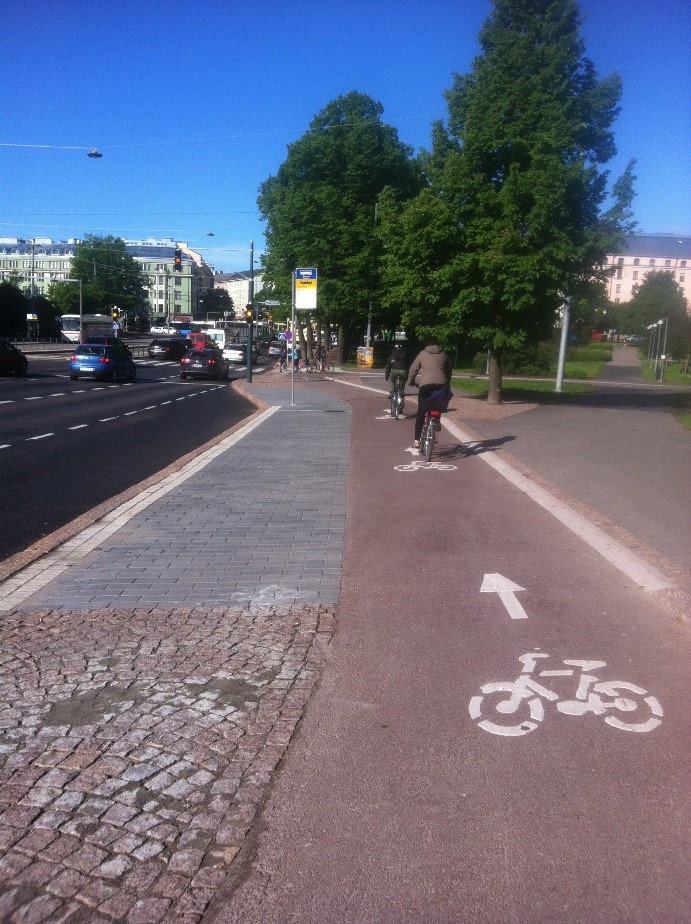
#VisionaryCities Series - Will Helsinki be the next Cycling Capital?
 The #VisionaryCities Series is a collection of best practices and success stories from visionary local authority leaders contributing to making Cycling in Europe better, safer and more common. We are going to be inviting some of them to share their thoughts and visions with ECF.com in the coming months.
The #VisionaryCities Series is a collection of best practices and success stories from visionary local authority leaders contributing to making Cycling in Europe better, safer and more common. We are going to be inviting some of them to share their thoughts and visions with ECF.com in the coming months.
This episode of the Series was written by Oskari Kaupinmäki, Project Manager in the City of Helsinki.
Current state – A look in the bicycle account
 Helsinki is undergoing the process of rediscovering the bicycle as one of the most efficient tools in improving urban mobility and liveability. Cycling in Helsinki is already considered a fast, convenient and safe way to get from A to B. New world class infrastructure and maintenance practices have been introduced and the new bike share programme deployed in 2016 has been a major success, inviting new users to do short trips by bicycle. Today, the bicycle and the city bike enjoy a strong presence within the city’s transport system and the city bike system has expanded significantly. This is confirmed by our annually conducted Bicycle Barometer and biannually conducted Bicycle Account, where we widely survey the opinions of the people of Helsinki in regards to urban cycling and city development. This information, coupled with expert evaluation, provide a lot of knowledge about the progress yet to be made with construction and maintenance.
Helsinki is undergoing the process of rediscovering the bicycle as one of the most efficient tools in improving urban mobility and liveability. Cycling in Helsinki is already considered a fast, convenient and safe way to get from A to B. New world class infrastructure and maintenance practices have been introduced and the new bike share programme deployed in 2016 has been a major success, inviting new users to do short trips by bicycle. Today, the bicycle and the city bike enjoy a strong presence within the city’s transport system and the city bike system has expanded significantly. This is confirmed by our annually conducted Bicycle Barometer and biannually conducted Bicycle Account, where we widely survey the opinions of the people of Helsinki in regards to urban cycling and city development. This information, coupled with expert evaluation, provide a lot of knowledge about the progress yet to be made with construction and maintenance.
The development of bicycle traffic at the city boundaries has been on the rise notably since 1997. While it’s difficult to assess whether the increase correlates with better socio-economic conditions, the beginning of the new millennium represents an era of economic growth in Finland. Therefore, a hypothesis can be formed that the improvements in socio-economic status of citizens did not lower bicycle traffic, but increased it instead.
 Significant improvement of cycling infrastructure within the city began in 2012, which also resulted in a spike of volumes. However, the slight decrease in bicycle traffic volumes registered as of 2013 is probably due to the numerous construction sites that obstruct bicycle traffic, as well as the slowness in the improvement of cycling facilities at the boundaries of the city.
Significant improvement of cycling infrastructure within the city began in 2012, which also resulted in a spike of volumes. However, the slight decrease in bicycle traffic volumes registered as of 2013 is probably due to the numerous construction sites that obstruct bicycle traffic, as well as the slowness in the improvement of cycling facilities at the boundaries of the city.
We are happy to register a new rise in bicycle volumes in the last years. We are in the process of greatly upgrading the bicycle network as the current cycling conditions do not meet the ideal quality requirements everywhere, specifically in terms of
- safety
- directness
- cohesiveness
- attractiveness
- comfort
This probably explains why Helsinki will not meet the bicycle modal share goal (15% by 2020) set in the previous Bicycle Strategy in 2014 in accordance to the Charter of Brussels signed in 2009. The modal share has remained stagnant, hovering a little above or below 10% for the past 10 years due to this fact.
 But there is no reason for concern. With a clear vision and the strategies adopted, we can confidently say that the modal shift to cycling has only been delayed. We believe the 15% target will be reached and surpassed.
But there is no reason for concern. With a clear vision and the strategies adopted, we can confidently say that the modal shift to cycling has only been delayed. We believe the 15% target will be reached and surpassed.
A strategy for the future
The City of Helsinki has a strong political will in promoting sustainable mobility and becoming the world’s best capital for sustainable transport. Cycling plays a major role in achieving that goal.
The city also has the objective of becoming carbon neutral by 2035, which implies that the modal share of cycling has to double to 22% by then. The most relevant strategies related to the main strategy and its vision are:
- Helsinki’s Mobility Development Programme 2015
- Cycling Master Plan 2014 (currently being updated)
- Cycling Master Plan Progress Report 2017
- Publication of the Bicycle Design Manual (www.pyoraliikenne.fi)
- Bicycle Network Master Plan 2012, 2013 and 2016
- Helsinki Council Strategy 2009-2012.
 In addition to the city’s ambitious and progressive goals, the following national strategies provide a strong support for cycling growth:
In addition to the city’s ambitious and progressive goals, the following national strategies provide a strong support for cycling growth:
- 2016: National Energy and Climate Strategy (in accordance with the agreed goals within the EU for the year 2030 and the Paris Agreement)
- 2018: Programme for the Promotion of Walking and Cycling (national)
The strong political will in the city has set in motion a major citywide transformation.
Handshake – inspiration from Copenhagen and human scaled cities
In order to gain some extra momentum, Helsinki is looking to Copenhagen for inspiration in the EU-funded Handshake project, which strives to create cycling friendly cities in the EU and to inspire change to others. Alongside Copenhagen, Amsterdam and Munich are also mentoring Helsinki and nine other EU cities in order to become Future Cycling Capitals.
Helsinki has a history of looking to Copenhagen and the Netherlands for guidance and inspiration in promoting cycling and enhancing cycling infrastructure with a holistic approach. This has resulted in Helsinki’s tailored Design Manual for Bicycle Traffic as well as the Bicycle Strategy. The aim of Handshake is to get an extra push in city development that will expedite change in becoming the best city in sustainable transportation in the world. High quality and innovative solutions that Helsinki seeks to adapt during the project are related to infrastructure, such as dedicated cycling and pedestrian bridges, and dedicated signal control for bicycle traffic. Improving quality of on-street infrastructure implementations is definitely on the list as well. Due to our northerly latitude and hence a similar climate to Copenhagen, we also seek mentoring with winter maintenance procedures and methods in order to promote year-round cycling further. Finally, the city’s bicycle strategy will be upgraded with the help of Handshake, enabling us to receive direct consultation from the experts in Copenhagen.
With the strong political support, comprehensive strategies and a holistic approach to promoting cycling, Helsinki is truly in the path of becoming a Future Cycling City and the world´s best metropolis of sustainable transport!
Regions:
News category:
Network/Project Involved:
Contact the author
Recent news!
Upcoming events
Contact Us
Avenue des Arts, 7-8
Postal address: Rue de la Charité, 22
1210 Brussels, Belgium









